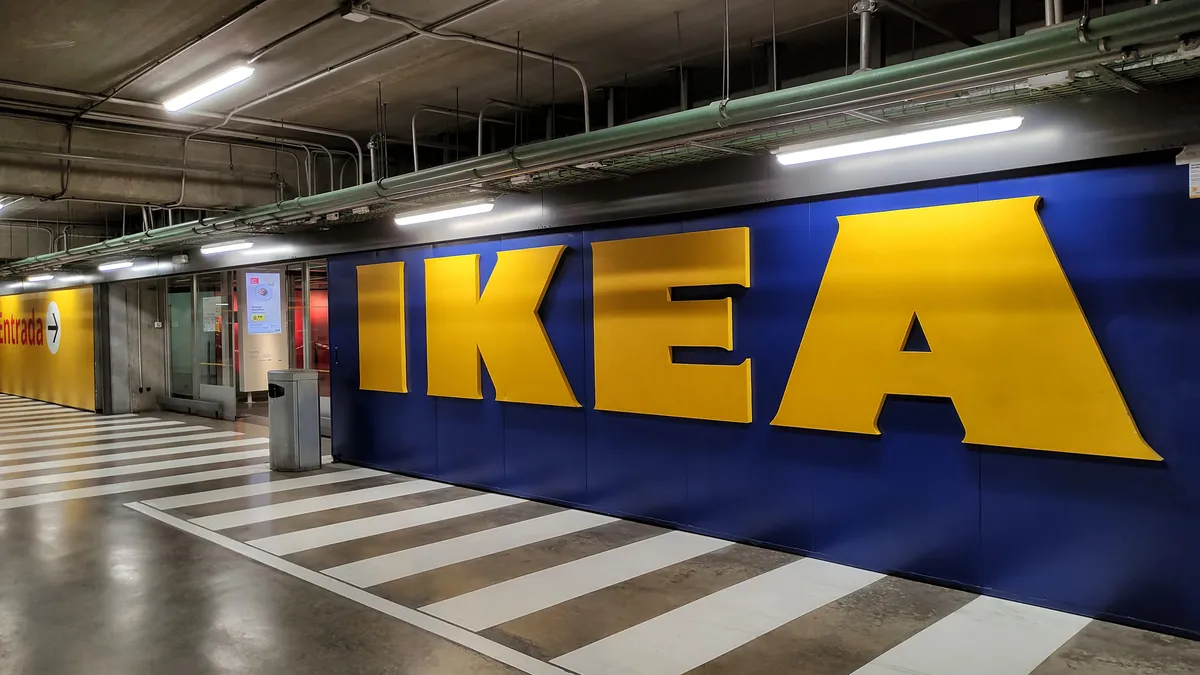Hyper-localization is one of the latest buzzwords in retail, especially in marketing. Its definition depends on whom you ask: For some, it simply means extremely well-targeted personalization. But fundamentally, hyper-localization requires an understanding of today’s customer that reaches across pretty much all aspects of retail, including the supply chain.
“You'll get different definitions from different people,” retail futurist Doug Stephens told Retail Dive. “Where this notion [of hyper-localization] comes from is from the idea that increasingly consumers now are searching with intent. They’re using their mobile devices to search for businesses, for services, for products at the point of inflection, while they’re on the go and while they’re in the marketplace, so there’s a lot of intent in their searches."
‘Buy local,” chain store-style
Perhaps it goes without saying that highly personalized service has long been easier for—and leveraged to greater advantage by—smaller, local independent retailers than by big-box stores. In recent years, indie retailers have been able to exploit that natural advantage even further thanks to a “buy local” movement that makes shopping close to home a virtuous act on the part of consumers.
There's arguably no better example of hyper-localization than one of the biggest local-store success stories of the current retail era: the surprising survival and even revival of the independent bookstore. While bookstores were once written off as Amazon's first victims, in recent years, new bookstore openings have outpaced closings. Despite their inability to compete on price, local bookstores have thrived at finding ways to appeal to customers. Shoppers see an advantage not just in browsing amid actual books, but also in turning to staff for recommendations and general chit-chat. Author readings, a more diversified set of merchandise (selling toys, candles, and other sundries beyond bookmarks and blank books) and even used books have also helped indie bookstores draw people in.
Beyond mass-produced items like books, local retailers have the opportunity to manufacture or curate higher-end merchandise that doesn’t carry the stigma of being made in overseas factories that mistreat workers or harm the environment. (Of course, being more expensive is no guarantee that any item is guilt-free, but local retailers interested in making a point of it have an excellent pitch to make to their customers.) Plus local business owners generally have a greater stake in area politics, schools, and other issues that larger corporate retailers operating in any given region may not even be aware of.
“Hyper-localization is part of a broader marketing strategy toward something that is relevant,” Stephens said. “Consumers are starting to revolt against the whole chain store mentality. But the concept of hyper-localization is really a backlash against mass marketing, where we’re hit with the same marketing funnel through broadcast media and mass media.”
The natural balance is shifting, however. National retail chains are increasingly making an effort to orient their stores to the local level. Designer Todd Snyder is working with Target, for example, on a campaign dubbed “Local Pride by Todd Snyder” to bring local flair to stores in Boston, Chicago, San Francisco, Los Angeles, and more. Snyder is immersing himself in the culture of each city and coming up with designs that capture the quintessence or nostalgia factor of each place for the project.
Costco has long worked with local buyers to fill some of its shelves with area produce and other products. Just last week, Wal-Mart’s rival Sam’s Club warehouse unit announced it also would try out using local buyers to find more locally-sourced fresh produce.
“The [big box] retailers have always wanted to get local and personal with their consumers, and this goes back even into the 90s and early 2000s. Retailers understand that from a very local market perspective, customer preferences differ,” Rob Hill, Nielsen EVP of Retail Services, told Retail Dive. “The data always sat out there in one form or another, [but] you weren’t able to get the real precise data points where you could do it at scale, where you could make the difference.”
The challenge for national chains is balancing their brand’s ethos with local proclivities, said Michael Stefanakos, VP at “lean retail” analytics firm FieldStack.
“There are things that you carry in your store that make it who your store is, and [customers] expect them when you walk into that chain,” Stefanakos told Retail Dive. “Then you have things that are regional, and hopefully you’re looking at analytics” to figure out what those will be.
Technological evolution
Big-box retailers are also implementing technologies giving them more precise consumer information and allowing them to diversify merchandising assortments and omni-channel services to meet local demands. But the data is often misconstrued, experts say. Individual customers are important in the old-fashioned sense that a retailer’s job is to “give the customer what she wants,” but retailers also should be taking careful note of customers’ buying habits and desires to discover the keys to optimal supply chain decisions.
“How you get that right is through true omni-channel, and knowing which buyers are buying which things,” said Brett Wickard, FieldStack's founder and president.
Analytics is key because, done right, it provides a large national retailer with information that becomes meaningful in new ways. It's not just about stocking more locally-produced goods, but more locally desired goods.
Say a shopper buys imported French honey that at some point her local big-box retailer had in stock. She may buy just two jars each year, and she may be among very few people who buy it at all. But if that customer is important to that retailer in other ways—because her other purchases are influential, for example, or she’s one of the best, most loyal customers, or her purchases are otherwise a good reflection of how to stock best-selling items in that neighborhood—it would be a mistake to discontinue that French honey.
“You only sell two jars a year, but if she’s literally your second-most important customer, and that’s the only honey that she buys, you would absolutely carry that honey, because one of the reasons that customer shops there is that you have that honey,” Wickard said. “It’s old-school service that you see on 'Little House on the Prairie,' where that general-store owner knows what you want when you walk in. New software tools allow us to maintain that environment. And it helps you understand that repetitively bought stuff. Data tells you who’s buying that French honey, and that if you lose that item’s sales, you lose that very important customer.”
There’s still a place in retail for creative buyers—those savvy individuals who can spot a trend coming and get out ahead of it. But the FieldStack guys say that analytics and hyper-localization should help, not hurt, that creativity. Once canary-yellow men’s shirts are flagged by a talented buyer as the Next Big Thing, it will be data that tells a retailer which stores might sell the most and which sizes go to which cities in which quantities.
Hyper-localization may be best understood as the path to true omni-channel retail. For smaller retailers, it’s a path to scale, said Nielsen's Hill. And for larger retailers, it is a path to growth.
“I just think that the national retailers, they are fighting to gain share of mind on a different plane,” Hill said. “If they’re going to experience growth into the future, they’re going to have to be aware of the local market."





















